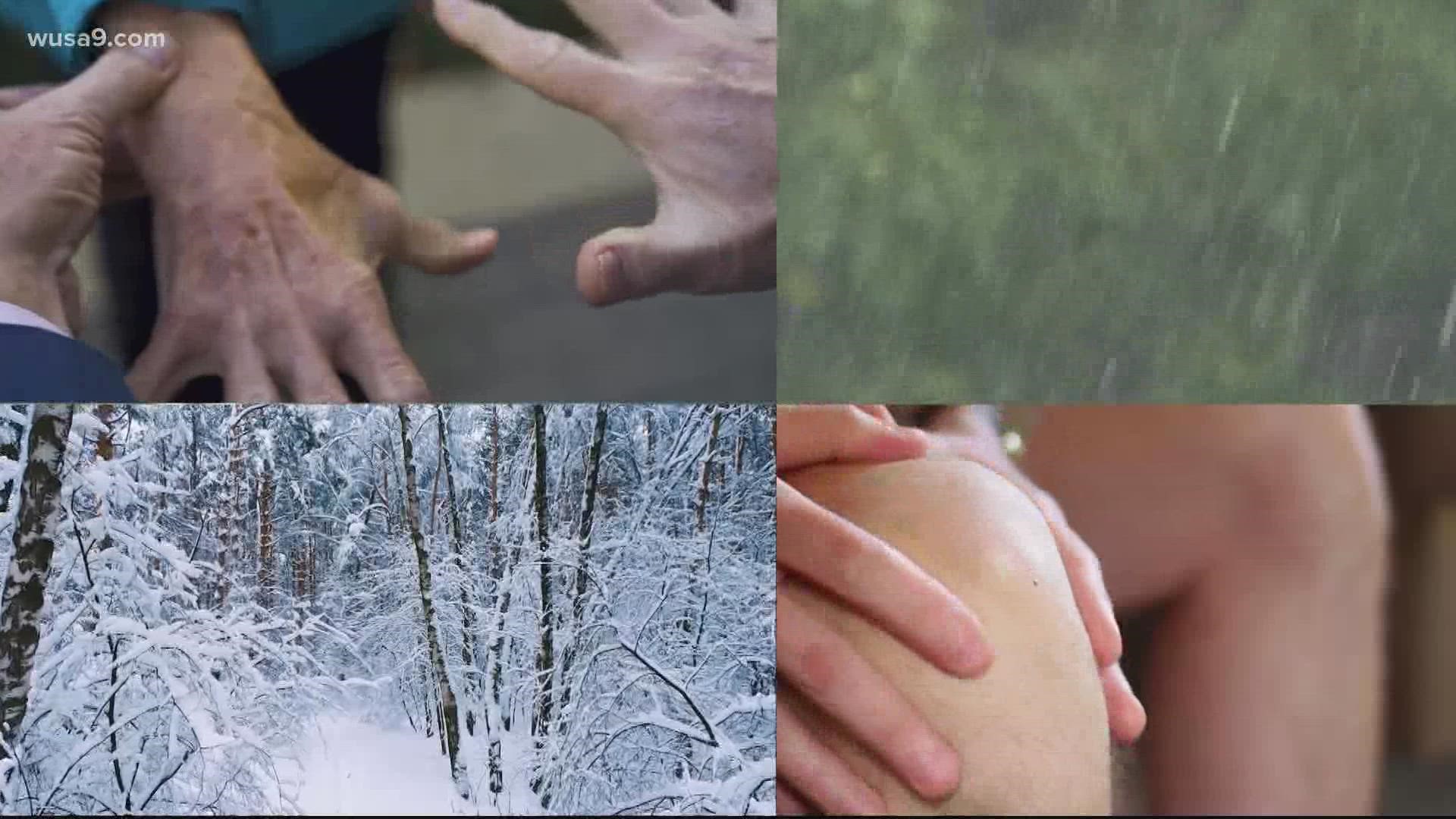WASHINGTON — Have you ever had a crazy uncle insist they can tell when it’s going to rain because their joints start to ache, or their head hurts? Well, it turns out people can feel cues from mother nature.
Biometeorology, or medical meteorology, is the link between weather, the earth’s atmosphere and living things. And in this case, humans.
“You just get this really deep ache and sometimes I find that the power of my grip is less than I am used to," Jean Thomas said.
Thomas lives with rheumatoid arthritis. And while she's not a meteorologist, she can tell when the weather is about to change.
"This is my weather vein because it’s my left wrist that seems to be most impacted," Thomas said, pointing to her wrist.
She said she feels the most discomfort before temperatures start to drop or when rain is on the way. And it’s the drop in barometric pressure that precedes rain events that causes joint pain.
“When the barometric pressure falls, the swelling in the knee expands to what’s like a water balloon," Dr. Robert Bunning, a rheumatologist with the National Rehabilitation Hospital, explains. "It expands and the stretch receptors fire and you feel pain.”
But changing air pressure doesn’t just impact patients with arthritis. If you’ve ever flown in an airplane or taken a ride on a roller coaster, your ears might have popped. Headaches and migraines can also be a precursor to changing weather. All are related to barometric pressure changes.
As far as the impact from dropping temperatures, the elasticities of tendons and cartilage can diminish with colder temperatures.
“There’s increased stiffness and there are a few specific diseases where the cold makes it worse,” Bunning said.
Blood vessels also constrict in cold weather, which can cause additional discomfort. Thankfully, the ailments discussed so far are all temporary and as the weather improves and temperatures climb, relief quickly follows.
This week's forecast: Temps could hit 70 Thursday, with rain in the evening
But there’s another side of biometeorology that is much more deadly and longer lasting.
According to Russell Dickerson, a professor in the department of atmospheric and oceanic science at the University of Maryland, the biggest impact that the weather has on human health is through air pollution.
"Environmental pollution, and air pollution especially, causes more morbidity and mortality than tuberculosis, AIDS and armed conflict combined," Dickerson said.
According to Dr. Dickerson, an estimated 9 million people worldwide are killed by health complications stemming from air pollution every year. Tens of thousands of those deaths occur across the United States.
The biggest culprit according to Dickerson is ozone pollution.
“It causes premature aging of the lungs and is related to sickness and even death," the doctor said.
Asthma attacks, lung cancer and cardiovascular problems are all linked to this type of pollution. Cars, trucks, power plants even vegetation on hot summer days can cause ozone. And while ozone levels here in the DMV have improved tremendously over the past decade, there is still a long road to cleaner air.
“The current standards are fairly loose," explains Dr. Dickerson. "They’re not really protective of human health. So we will probably see in the next couple of years a tightening of those standards to protect our health a little more.”
Our warming climate is causing additional cause for concern. More days with extreme heat means more ozone pollution.
"The short pollutants that cause people to become sick or die are also related to the longer-lived pollutants that can warm the climate and change the global weather patterns," Dickerson said.


Air quality across the region right now is very good. And this is no surprise, fall and winter typically do coincide with the cleanest air we breathe. That’s because ozone increases in the warmer months. Since heat and sunlight are the engines that drive ozone formation, warm sunny days produce more ozone than cool or cloudy days.

